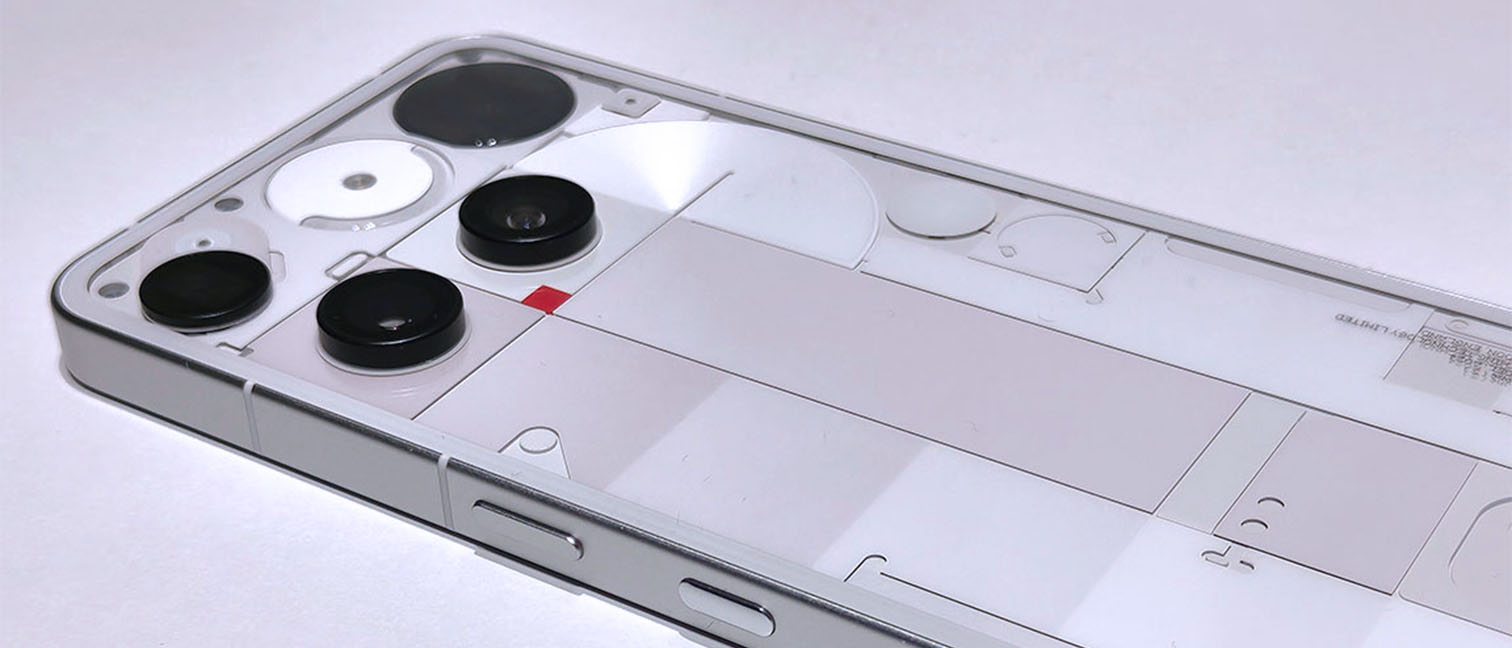Our Verdict
Playful, original, and packed with innovative features and touches, the Nothing Phone (3) is a design-first phone that stands out in a crowded market.
For
- Glyphs are now more playful
- Superb cameras and app
- Head-turning design
Against
- Not the most powerful CPU
Why you can trust Creative Bloq
Nothing Phone (3) feels like a statement. While it can't compete directly with the more powerful – and far more expensive – iPhone 16 Pro Max and Samsung Galaxy S25 Ultra, with Phone (3), the UK brand has revamped its 'mindfulness' approach, developed a playful OS, and pushed the specs as far as it can for a sub-$800 / £800 device. And it pays off.
I’ve been quietly rooting for Nothing since it burst onto the scene with Phone (1), and I loved the Phone (2) upgrade. The brand's unique transparent design, dot-matrix aesthetic, and promise to do things differently felt like a much-needed shift in a smartphone world that had become bloated and beige (as evidenced with the best iPhones for photography).
But as much as I admired the idea of Nothing, its first two phones didn’t quite deliver for many others, who felt these devices were a gimmick. Phone (3) changes that.
This is the moment when form finally meets real function. Nothing Phone (3) is no longer just a pretty object to sit on your desk and blink and buzz; it’s a thoughtfully crafted, genuinely useful device that feels designed for creators, designers, and anyone who thinks with their hands and captures ideas as fast as they come. It’s not perfect, but it might be the most creator-friendly phone I’ve used.
Let me tell you why.
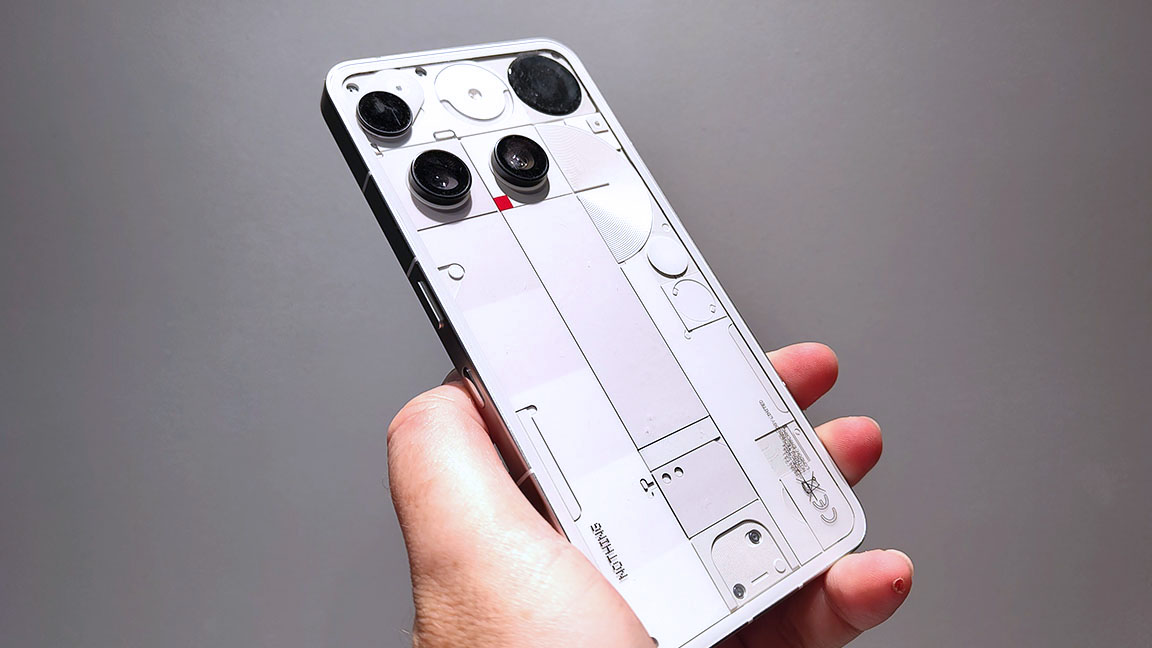
Nothing Phone (3): how I test
I've been using Phone (3) daily for a week to test out its core features and see how it handles moment-to-moment. I've been using it for photography, experimenting with AI notes and exploring the customisation options. While this review was written after a week of continued use, I'll return to this article over time and update it with new impressions and thoughts as Nothing develops its OS, Glyph Matrix apps and features.
Nothng Phone (3): in the box
Alongside the Nothing Phone (3) you get the bespoke Nothing Cable (c-c) 100cm and a pre-applied screen protector, along with a SIM tray ejector tool. A note on the screen protector – this, as with previous Nothing Phone's is excellent, a bezel-to-bezel protector that you won't even know is there.
Daily design news, reviews, how-tos and more, as picked by the editors.
My Phone (3) review unit came in a unique box that also includes the clear rubberised case, which you will need. I've bought one for each Nothing Phone I own so you'll need to buy this as an extra if you're ordering a Phone (3). Just as with the phone itself, this is carefully designed, and its unique clear build accentuates the Phone (3) rear panel design.
Nothng Phone (3): specs
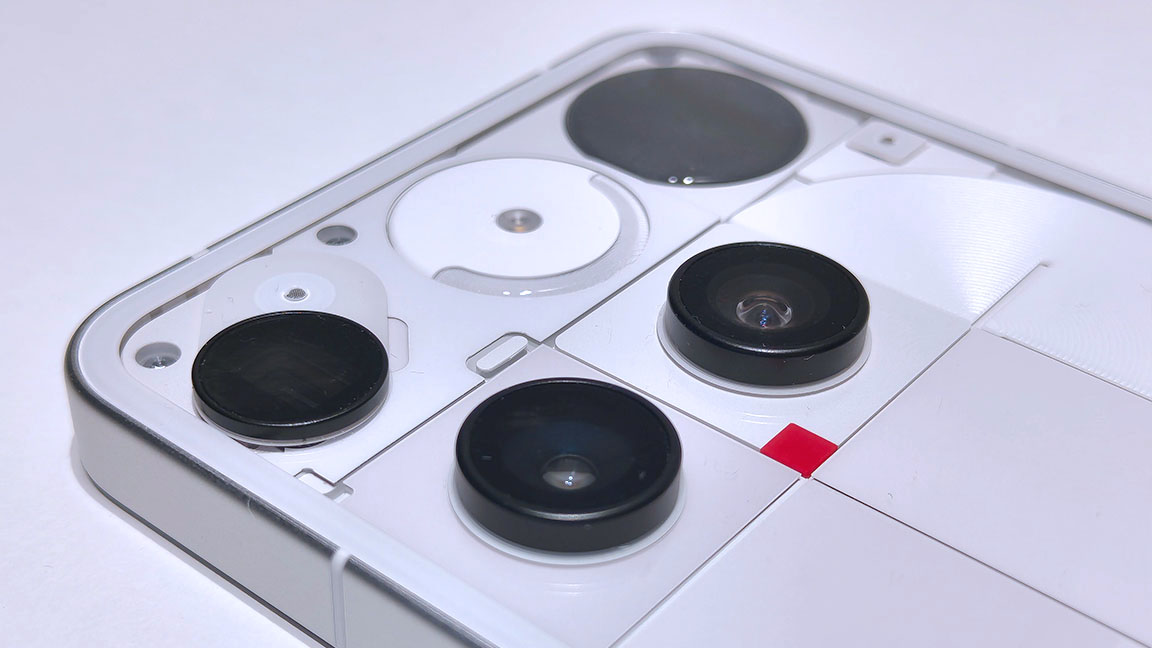
When it comes to the processor, Nothing has finally joined the big boys. The Phone (3) is powered by the Qualcomm Snapdragon 8s Gen 4, built on an advanced 4nm process by TSMC. That means it’s not just faster, it’s more efficient, cooler under load, and smarter about how it handles tasks. While it's not the Snapdragon 8 Elite many would consider a 'flagship' phone needs, Nothing has balanced power with budget nicely.
The CPU architecture features an 8-core CPU with speeds up to 3.21GHz, and the Qualcomm AdrenoTM 825 GPU delivers graphically. This layout gives it the muscle to handle heavy workloads, from mobile video editing to AI-enhanced imaging, without draining your battery like a leaky sink.
And speaking of AI, the new Hexagon NPU delivers a 125% speed boost over Phone (2). That means features like real-time transcription, scene recognition, and image processing all happen faster and more accurately, on-device. It’s not just about speed. It’s about feeling smart, and this chip nails it. In use, whether editing photos, splashing digital paint in Heavy Paint, or meddling with AI, this phone works nicely.
The GPU’s no slouch either. The Adreno 825 offers an 88% boost in graphics performance compared to Phone (2) – so says Nothing. Again, in practice, I can't say that '88% boost' is accurate, but I can say I felt a jump in performance when playing games and jumping between digital art apps. Apps like Adobe Express impressed on Phone (3. Paired with up to 16GB of LPDDR5X RAM and 512GB of UFS 4.0 storage, you’re getting a phone that can keep up with your creative chaos.
Capacity: | 12 GB + 256 GB / 16 GB + 512 GB |
Dimensions: | Height: 160.60 mm, Width: 75.59 mm, Depth: 8.99 mm, Weight: 218g |
Durability: | IP68, Corning Gorilla Glass 7i (front), Corning Gorilla Glass Victus (back) |
Battery: | 5150 mAh rated capacity, 65W Fast charging, Charge time from 1-100% power: 54 minutes, |
Processor: | Qualcomm Snapdragon 8S Gen 4, 4 nm TSMC process, Qualcomm KryoTM, 8-core, up to 3.21 GHz |
Sensors: | In-display fingerprint sensor, Accelerometer, Electronic compass, Front ambient light sensor, Gyroscope, Proximity sensor |
Nothng Phone (3): design
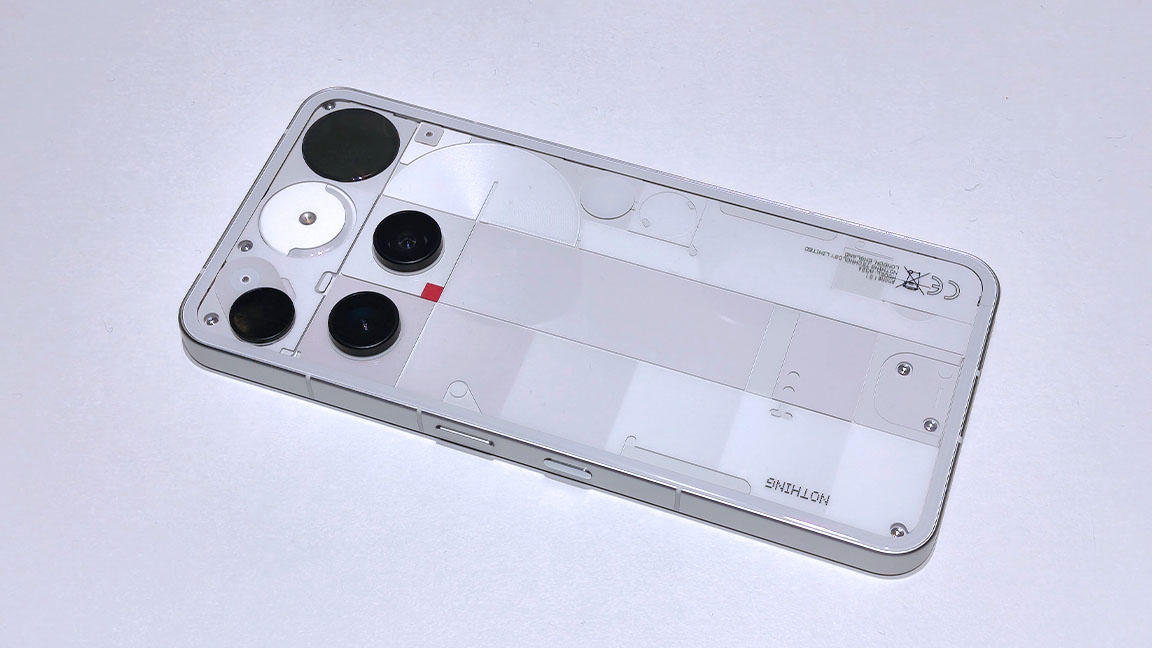
The look of the Phone (3) feels like the one where the brand's designers have stopped showing off and started refining – it's The Beatles Rubber Soul, Radiohead's OK Computer, well… you get the point. The transparent back remains, but it’s more structured this time around. The layered glass and metal, the lines and graph-like, asymmetrical panelling set in a disciplined three-column grid; circles and textures draw the eye like a modernist work of art. Phone (3) feels like a piece of conceptual industrial design, and really, it's different from everything – smartphones aren't supposed to look like this.
Even the bezels have had a refresh and refinement. They’re now just 1.87mm all around, 18% thinner than on Phone (2), giving the AMOLED display a properly framed, modern edge. It’s subtle, but it changes how Phone (3) feels in the hand and to the eye. This phone feels composed, balanced, and, yes, unmistakably Nothing.
The design comes at a cost, of sorts. The maze of LEDs that made the previous Nothing Phones stand out is no longer here; instead, the Glyph Matrix is now a circular visual display at the top right of the phone. At first, it's underwhelming, then someone calls, and the little screen whirrs and glitches with distinct animations, and it feels like a development on the old LED idea.
With 489 individually controlled LEDs, it now shows contact-based icons, caller IDs, timers, and status updates. And it’s not just for show. It genuinely adds to how I use the phone, without dragging me into the screen, I can easily see the time, the battery status, and more. While a part of me would love the full rear LEDs to remain, the reality is the new Glyph Matrix is Nothing growing up, form and function, novelty and use finally working in harmony.
Nothing Phone (3): display
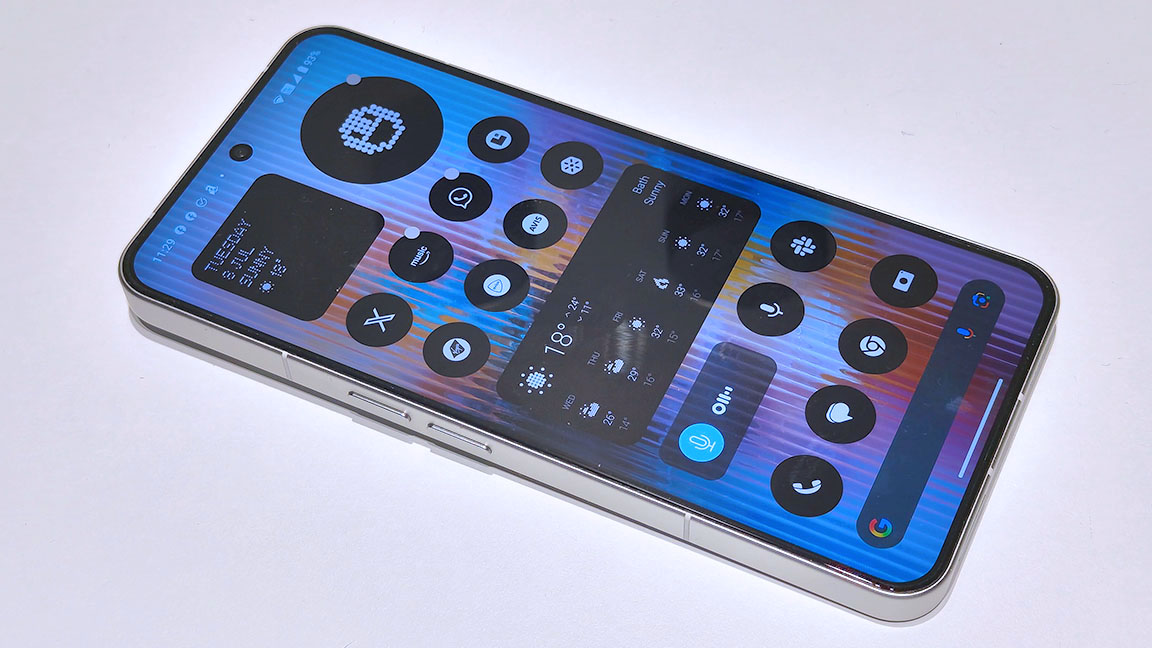
Phone (3)’s 6.67-inch flexible AMOLED display is one of the best I’ve used at this price, and it matters. For anyone working with visual content, whether that’s sketching UI ideas in Figma, finger painting in the best drawing apps for Android like Heavy Paint and ArtRage Vitae, reviewing photos, or editing images on the go, this screen delivers clarity, colour fidelity, and contrast.
It packs a resolution of 1260 x 2800 at a sharp 460 pixels per inch. You won’t see individual pixels, just crisp, clean detail. But what makes it shine is the brightness. This display hits 4,500 nits at peak HDR, and 1,600 nits full-screen outdoors. That means I could use it confidently in bright sunlight without squinting or cranking up the brightness to the max and draining the battery, as I had to with Phone (2).
It supports HDR10+, has 10-bit colour, a contrast ratio of 1,000,000:1, and a smooth 120Hz adaptive refresh rate (iPhone 16 remains 60Hz). Add a 1,000Hz touch sampling rate, and it feels incredibly smooth; every scroll, tap, and sketched line lands precisely where I want it.
Dimensions: | 6.67” flexible AMOLED, |
Colours: | HDR10+, |
Refresh: | 120Hz adaptive refresh rate, 1000Hz touch sampling rate, |
Brightness: | 960Hz PWM frequency, |
Nothing Phone (3): cameras
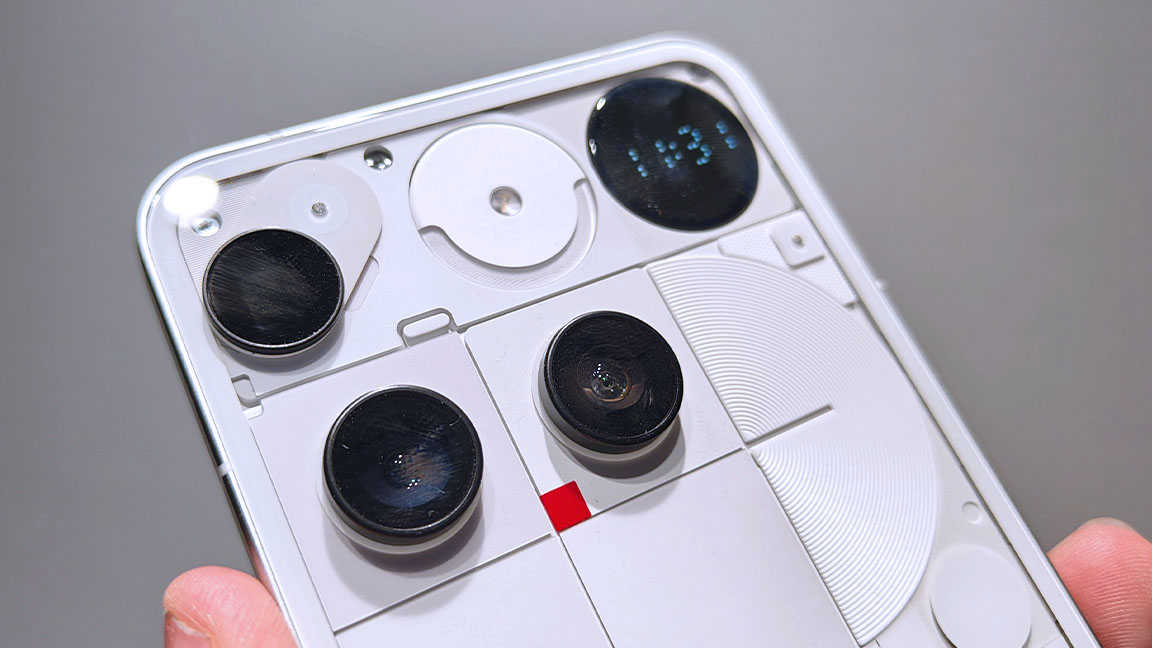
Nothing has completely overhauled its camera system, and it shows. There are four cameras, all 50MP, and they all support 4K at 60fps. This all-50 MP setup means there's uniform, high-res capability across all angles and uses, whether you're snapping ultra-wide, telephoto, macro, or selfie shots. This taps into Nothing's desire to simplify creative workflows and ensure consistent quality.
The main sensor is a 50MP 1/1.3-inch sensor with OIS, and it’s a beast in low light. It captures 44% more light than Phone (2), and that’s immediately obvious when shooting interiors or evening cityscapes. The detail is rich, colours are balanced, and thanks to the new TrueLens Engine 4, shadows and highlights are treated with respect. No more blown-out skies or muddy blacks.
The telephoto lens is another highlight. It’s a periscope-style 70mm lens that gives you 6x lossless zoom and up to 60x AI Super Res zoom. It also has a macro mode that uses the periscope’s focus system to get ridiculously close without distortion. It’s great for product photography or capturing fine textures. Keep in mind, the base iPhone 16 model doesn't have a telephoto sensor, instead relying on an x2 in-sensor zoom, and Phone (3) feels like a bargain for photographers.
The 114-degree ultra-wide lens brings action camera-level stability, which is ideal for event footage or capturing mood boards on the go. The selfie camera is a content creator’s dream; sharp, stabilised 4K/60fps, perfect for vlogging. More fun? You can use the Glyph Matrix display to perfectly align selfies via a little dot matrix portrait.
Then there’s Ultra XDR Video, which captures dual exposures per frame. That means better dynamic range, richer contrast, and smoother highlights, especially when shooting backlit or high-contrast scenes. It feels like shooting with a real camera, not a compromise.
All this is nice, but specs alone don't determine if a camera phone's images look good or not, a lot relies on the AI and software used to process how images look. Here, I've always found Nothing's cameras to be surprisingly beautiful, with nighttime photos particularly vibrant.
With the release of Phone (3), you get several professional presets, all created and designed by photographers to deliver warmth, vibrancy, retro hues, and more. I'm no pro photographer so being able to get a look I love at a touch, with more planned for release, is a real boon.
Nothing Phone (3): AI tools
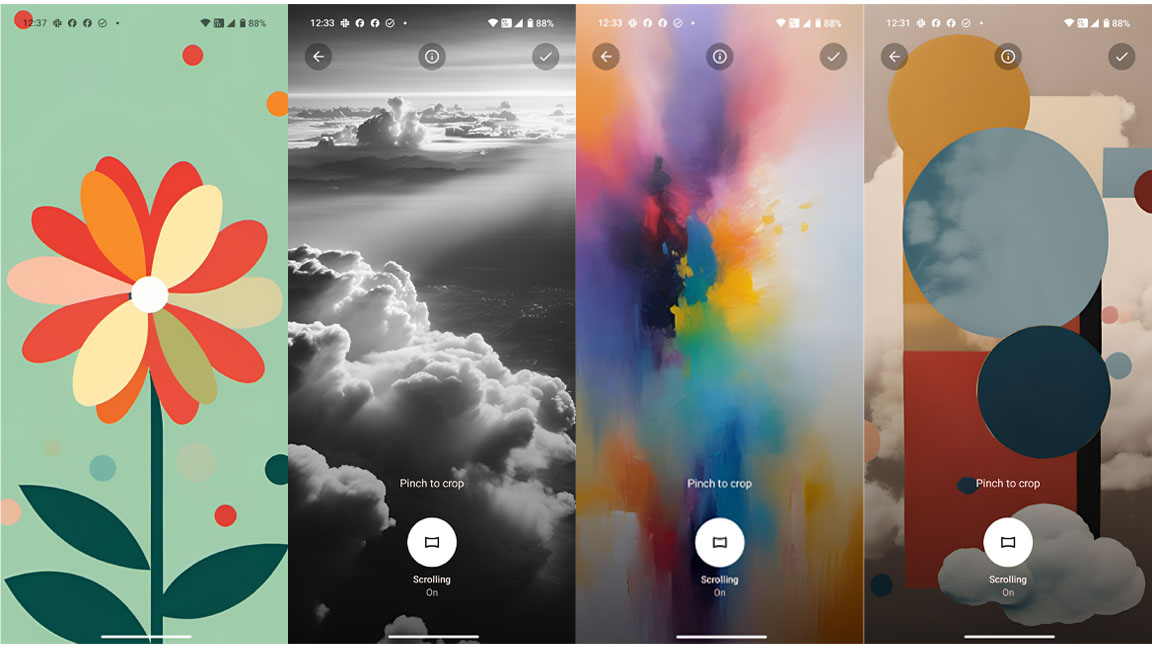
The biggest surprise on Phone (3) isn’t the camera or display, it’s Essential Space. This is a new kind of productivity system, built for people who think in fragments, bursts, and messy notes (hello, creatives).
It’s activated via the new Essential Key on the phone’s edge, a smooth, rounded button that feels different from the phone's other keys, and offers a few simple shortcuts: a single press captures a screen or sends a photo to Space; a long press: record a voice note that’s transcribed automatically; a double press jumps into Essential Space; finally, Flip to Record is a new AI transcription tool for recording meetings, and will identify speakers and log action points (a little like Otter.ai).
Everything is sorted, summarised, and labelled by on-device AI. It’s not just storage, it’s a smart second memory. You can even create Collections, and the phone will auto-organise them by context and time. For someone like me who juggles visual ideas, meeting notes, and stray thoughts, it sounds like an indispensable feature.
Yet, well… I'm struggling to make it my first-choice AI app. I love the setup and idea, but the current 'mood board' of recorded notes, site images, and audio notes can feel messy. It's a new idea – something I have been working with since its early-bird inclusion on my Phone 2 (a) review model – but I feel it needs more time to bed in and become second nature.
What's more instinctive is the new Essential Search, which aims to contextualise search. Swiping up from the bottom, you can find anything: contacts, voice notes, links, documents, appointments, and instant answers like weather reports, conversions, or facts. It’s context-aware, lightning-fast, and doesn’t bounce you into different apps, making it an ideal on-phone search tool. It’s what Android’s universal search should’ve been years ago, but a lack of consistency let it down.
Nothing Phone (3): Glyph Matrix
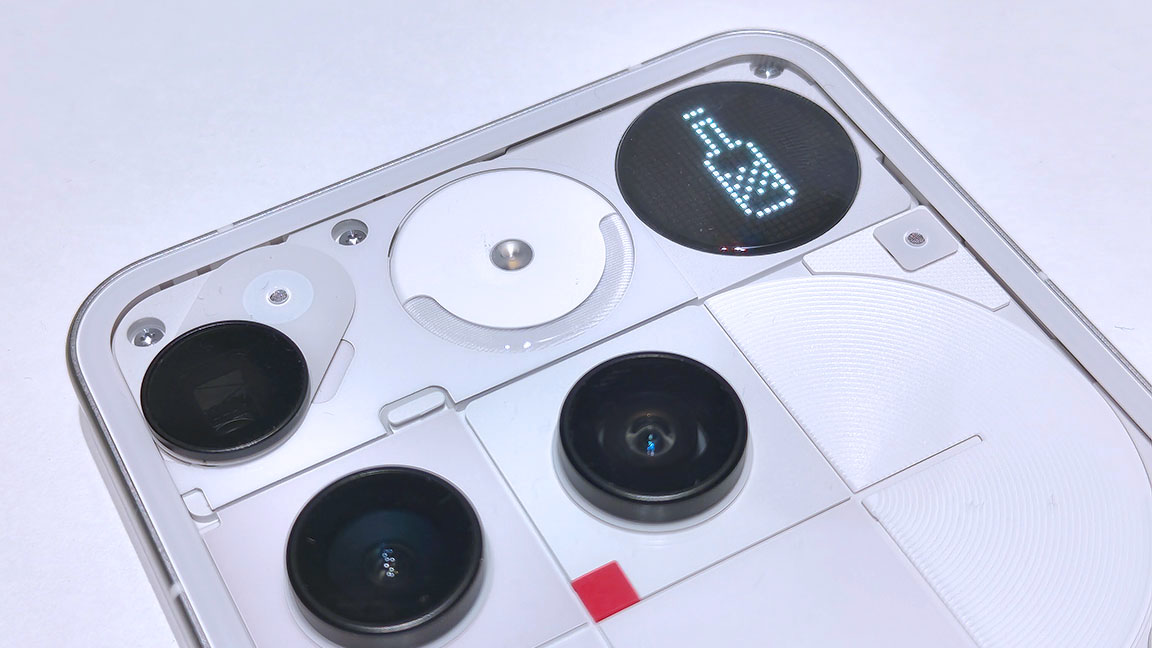
When Nothing's first Phone (1) and Phone (2) were released with the Glyph Interface, the rear panel of LEDs that lit up for incoming calls and notifications, it was viewed as a gimmick. Me? I loved it, and indeed found subtle uses like Phone (2)'s Google Meeting schedule indicator hook-up incredibly handy (a Glyph light slowly builds as a meeting gets closer.
So, with Phone (3), I'm torn. The new Glyph Matrix, now a small circular display at the top of the phone, can display animations and even Glyph 'Toys' – games and apps. It can show pixel avatars for contacts, alert you to app-specific notifications, display timers and battery status, and even record status for Essential Space. So, yes, it's far more useful and offers more creative depth than simple LEDs. But it lacks the head-turning drama of the previous phones' flashing lights.
You can now assign custom icons and animations to people, so you know who's calling not simply by the unique ring tone assigned to your contacts list, but by the animations ongoing in the Glyph Matrix. The Glyph Button makes it interactive, tap to cycle through modes, and hold to activate features. With haptic feedback, too, it's tactile and fun (though it takes some getting used to).
Then there are those Glyph Toys, miniature dot-matrix apps that live on the back of the phone. Some are useful (a leveller, a stopwatch, a solar clock), some are playful (Rock Paper Scissors, Spin the Bottle, Magic 8 Ball). They're a creative flourish, and Nothing’s even releasing an SDK so developers can create more.
While I still hanker after the old head-turning Glyph LEDs, I can see the potential in the new system on Phone (3) – even the small things, like having a digital clock displayed so you never need to pick up the phone and flip to see the time, is a mindfulness plus.
Nothing Phone (3): who's it for?
The Nothing Phone (3) is the first smartphone in years that feels considered, not just engineered. It thinks about how people work, create, and capture ideas. As such Phone (3) is a creative phone, a device to capture the moment, whether in audio notes, web research and reference, or photos.
Fittingly, it’s a beautiful object. But more importantly, it’s capable. Sure, if you want more specs for a similar price, you can head to the Vivo / Oppo / Xiaomi muddle of devices, but Nothing looks, well… like nothing else; a design-first smartphone.
Buy it if…
- Design matters, and you want an original phone
- You need a great camera and app
- You want to feel more mindful and lower screen time
Don't buy it if…
- You want 8K video (then look to Samsung)
- You're tied to Apple and not open to Android
- You need more power – look to iPhone 16 Pro Max instead
out of 10
Playful, original, and packed with innovative features and touches, the Nothing Phone (3) is a design-first phone that stands out in a crowded market.

Ian Dean is Editor, Digital Arts & 3D at Creative Bloq, and the former editor of many leading magazines. These titles included ImagineFX, 3D World and video game titles Play and Official PlayStation Magazine. Ian launched Xbox magazine X360 and edited PlayStation World. For Creative Bloq, Ian combines his experiences to bring the latest news on digital art, VFX and video games and tech, and in his spare time he doodles in Procreate, ArtRage, and Rebelle while finding time to play Xbox and PS5.
You must confirm your public display name before commenting
Please logout and then login again, you will then be prompted to enter your display name.
